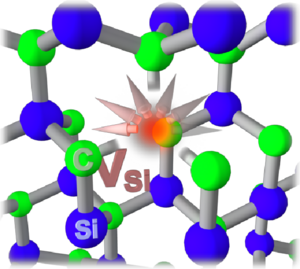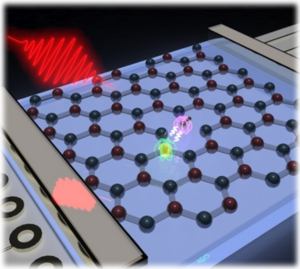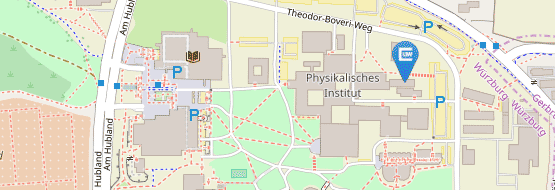Colour Centers, Quantum Sensors and Microwave Emitters
The development of a solid-state system for quantum information technologies and sensing applications is a very vibrant research area. An essential part of it, the spin degree of freedom, is an invaluable source of information as it provides an interface to the environment it is surrounded by. Our group is interested in 2D and 3D wide bandgap semiconductors, such as hexagonal boron nitride (hBN) and silicon carbide (SiC), which have recently attracted much interest as technologically perspective quantum platforms. Optically active spin defects, such as the boron vacancies (VB-) in hBN and silicon vacancies (VSi) in SiC, have unique properties, such as single photon emission and highly coherent spin ground state. In contrast to the VSi in SiC with a high half-integer spin S=3/2 [1], the recently discovered S=1 VB- defect in hBN has S=1.[2] Electronic spins associated with VSi centers demonstrate an exceedingly long spin coherence time T2 of the order of 50 us at room temperature and 20 ms at cryogenic temperatures without isotope purification.[3] Recently, we have also succeeded in coherently manipulating VB- centers in hBN, which show promising spin coherence time at room temperature.[4] Future activities in this field address various applications of highly coherent and deterministically positioned spin centers in 2D and 3D heterostructures for spin electronics, spin photonics and microwave emitting quantum devices such as a maser.[5]
 |
(left) SiC crystal lattice with a missing silicon atom - a silicon vacancy VSi. (right) VB- spin defects in two-dimensional hBN. Using resonant microwaves, spin states and the emission of these quantum defects can be coherently manipulated at room temperature.
1. Excitation and coherent control of spin qudit modes in silicon carbide at room temperature
V. A. Soltamov et al., Nat. Commun. 10, 1678 (2019). [DOI: 10.1038/s41467-019-09429-x]
2. Initialization and read-out of intrinsic spin defects in a van der Waals crystal at room temperature
A. Gottscholl et al., Nat. Mater. 19, 540 (2020). [DOI: 10.1038/s41563-020-0619-6]
3. Locking of electron spin coherence above 20 ms in natural silicon carbide
D. Simin et al., Phys. Rev. B 95, 161201R (2017). [DOI: 10.1103/PhysRevB.95.161201]
4. Room temperature coherent control of spin defects in hexagonal boron nitride
A. Gottscholl et al., Science Adv. (2021). [DOI: 10.1126/sciadv.abf3630]
5. Room temperature quantum microwave emitters based on spin defects in silicon carbide
H. Kraus et al., Nat. Phys. 10, 157 (2014). [DOI: 10.1038/nphys2826]




